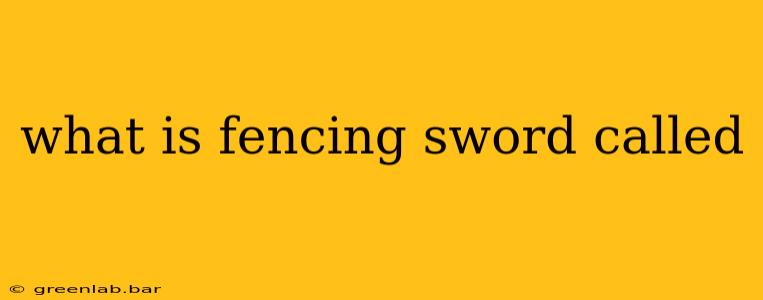Fencing, a thrilling and strategic sport, utilizes a variety of specialized swords, each with unique characteristics and classifications. Understanding the terminology surrounding these weapons is crucial for both participants and spectators. This guide will delve into the names and distinctions of fencing swords, providing a comprehensive overview of this intriguing aspect of the sport.
The Three Main Types of Fencing Swords
Fencing isn't simply about wielding any old blade. The sport is divided into three distinct weapon categories, each demanding specific techniques and strategies:
1. Foil
The foil is characterized by its light weight and flexible blade. It's a thrusting weapon only, meaning points are scored only by touching the opponent with the tip of the blade. The foil's lightweight nature and flexible blade require precise control and technique, emphasizing speed and accuracy. Its target area is the torso, excluding the head and arms. This focus on precision contributes to the foil's reputation as the most technical of the three weapons.
2. Épée
The épée, unlike the foil, is a thrusting weapon that allows for touches anywhere on the body. Its rigid blade and heavier weight contribute to its powerful thrusts, demanding a different approach to strategy and technique. Épée fencing often involves more direct, powerful attacks compared to the foil's more intricate maneuvers. Because the entire body is a target area, strategic positioning and anticipation become critical aspects of épée play. The absence of right-of-way rules (discussed later) creates a dynamic and unpredictable style of combat.
3. Sabre
The sabre distinguishes itself as a cutting and thrusting weapon. This versatility introduces a higher level of dynamism and unpredictability. The curved blade allows for both powerful slashes and precise thrusts, requiring a broader range of skills and adaptations. The target area encompasses the torso, head, and arms, leading to faster-paced and often more aggressive bouts. Sabre fencing demands quick reflexes, excellent timing, and a potent combination of offense and defense.
Beyond the Basics: Understanding Fencing Terminology
While the names "foil," "épée," and "sabre" are the most commonly used, understanding additional terminology will enhance your appreciation of the sport. You might also hear these terms used:
- Blade: The actual sword itself. Each type of blade has specific weight, flexibility, and length requirements.
- Grip: The handle of the sword, providing the fencer with control and stability.
- Point: The tip of the blade. In foil and épée, a touch with the point is required to score a point.
- Right-of-Way: A rule primarily applied in foil and sabre fencing. This rule determines who gets the point when two fencers touch simultaneously. It's not applicable to épée fencing.
Conclusion
The diverse range of weapons in fencing creates a rich and multifaceted sport. Each weapon, from the lightweight foil to the powerful épée and versatile sabre, demands a unique set of skills and strategic considerations. Understanding the distinctions between these blades and the associated terminology is crucial to appreciating the nuances and intricacies of this exciting and demanding sport. The next time you witness a fencing match, you'll have a deeper understanding of the weaponry at play.

